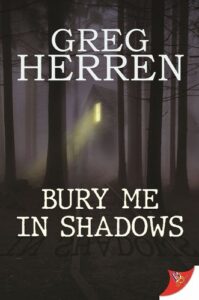I spent many hours as a child, sitting with my grandmother on her couch, watching black-and-white films from the days of classic Hollywood. Her favorites were mysteries, and if there happened to be a ghost or some paranormal element to it, so much the better. It was inevitable that when I started reading that I would gravitate towards mysteries and paranormal stories—with a particular love for ghost stories. I loved the Hardy Boys and the other series for kids; and I still love watching films from classic Hollywood. I eventually outgrew the Scholastic Book Club and the kids’ mystery series (I read almost all of them), and happily spent hours examining the paperback racks at the Zayre’s Department Store in our Chicago suburb, trying to decide which book to take home with my meager allowance.
I was always drawn to the books that had spooky-looking covers—the ones that now have countless websites, Pinterest boards, and blogs devoted to them, usually titled some variation of “Young Women With Long Hair Running Away from Spooky Houses in Nightgowns.” I love these sites and being reminded of books and authors I used to enjoy, like Daoma Winston and Virginia Coffman and Susan Howatch, among others. But my favorite authors from that period—Barbara Michaels, Victoria Holt, Phyllis A. Whitney, and Daphne du Maurier—are favorites of mine to this day, and I love revisiting their work when I have the time. These women also had an enormous influence on my work.
These books are sometimes categorized as romantic suspense, sometimes as Gothics; there’s certainly some crossover between the two styles. I am hardly an expert on what makes a work a “gothic”—but for me, it’s a sensibility; a voice and style of narrative that usually involves an outsider (for most of the authors mentioned, that generally means a very young, innocent and vulnerable woman) coming to a big, lonely palatial estate with a purpose (bride, governess, distant impoverished relation) which inevitably places the heroine into some kind of danger. Again, though, for me, it’s more about the mood, the voice, the atmosphere.
I always saw my next book, Bury Me in Shadows, as an homage to the Gothic novels I loved (and continue to love) to this day. So, as I prepared to write the book, I went back and revisited some of my favorites, to get a feel for that Gothic tone and sensibility I’ve always loved. Sometimes in these books there is a paranormal element to the stories; in many of them the ‘haunting’ is a man-made trick to fool the heroine. Gothic novels are not as popular as they were in their heyday (when any suspense novel by a woman was given one of the aforementioned covers; even paperback editions of suspense novels from Charlotte Armstrong and Margaret Millar got that kind of cover), but I still love them.
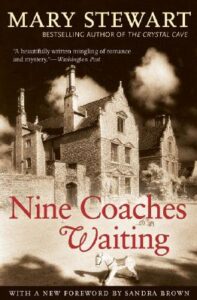
NINE COACHES WAITING
By Mary Stewart
I first discovered the great Mary Stewart with her classic impersonation novel, The Ivy Tree. Stewart is often considered a romantic suspense writer, but while her books do have elements of romance in them, the mystery story was always first and paramount to Stewart—to the point that in some of the books the romance (The Moon-spinners, My Brother Michael) almost seems tacked on as an afterthought, perhaps at the insistence of the publisher (a hill I will die on is that Stewart’s Airs Above the Ground is NOT romantic suspense). But if any of Stewart’s novels can be considered a Gothic suspense tale, it’s Nine Coaches Waiting. It certainly contains the classic tropes: an orphaned young woman as the main character, hired as a governess to a child in a French chateau; a wealthy, mysterious family haunted by tragedy and secrets; a handsome male love interest who cannot be completely trusted; and most importantly, a child in peril that heroine Linda Martin is determined to save. The child, Philippe, has inherited the title, the chateau and all the money, which is being managed by his uncle…who will get everything if anything happens to the little boy. The passages where Linda, recognizing the danger as imminent, whisks young Philippe out of the chateau and they escape to safety through the thick forest and over a mountain is a master class in pacing suspense—and the book, fifty years after publication, still holds up.
Stewart was also a master when it came to openings: I was thankful that nobody was there to meet me at the airport.
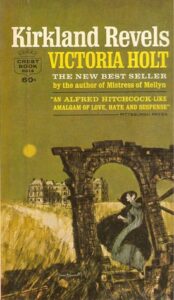
KIRKLAND REVELS
By Victoria Holt
I met Gabriel and Friday on the same day, and then strangely enough I lost them together; so that thereafter I was never able to think of one without the other.
Victoria Holt was one of the many pen names of prolific author Eleanor Hibbert; as Holt, she published a novel a year for over thirty years, many of which were New York Times bestsellers. She was a master of the young-woman-in-danger trope, which she managed to change up a bit in every novel in order to keep the plots and characters fresh. Kirkland Revels is an oddity in that our heroine-in-peril, Cathy, also happens to be pregnant. She met Gabriel, the heir to Kirkland Revels, one afternoon on a walk; and with her new acquaintance she acquired the puppy Friday. After a whirlwind romance they are married and he brings her home to the ancestral estate, and within a few weeks—as predicted in the above opening sentence—Friday disappears and Gabriel falls to his death from a balcony. Cathy returns to her family, sad and confused, but returns to Kirkland Revels when she realizes she is carrying Gabriel’s child and heir. There’s a haunted ruined monastery near the house; a ghostly monk who walks the halls of the Revels, and Cathy begins to suspect there are other sinister forces at work—and Gabriel’s fall might not have been an accident.

GAYWYCK
By Vincent Virga
I didn’t discover this enormously popular and critically acclaimed Gothic until Alyson Books reprinted it in 2000, but once I had a copy in my hands, I couldn’t put it down and it quickly became a favorite. Set during the 1890’s in New York and Long Island, our young gay hero, Robert Whyte, comes to the palatial and spooky estate of Gaywyck to catalogue the vast library; and of course is soon falling in love with the handsome and mysterious master of Gaywyck, Donough Gaylord. There is mystery around every corner of the house; Donough is haunted and unhappy due to his past, the place may be haunted; and there are family mysteries and secrets everywhere. Originally published in 1980, Gaywyck doesn’t often get its due from queer literary historians despite being the first gay Gothic style romantic-suspense novel. The story still holds up today.
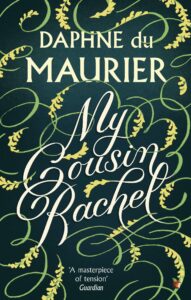
MY COUSIN RACHEL
By Daphne du Maurier
Du Maurier has been one of my favorite authors since I was a teenager and read, for the first time, her chilling novella “Don’t Look Now.” My Cousin Rachel is just as worthy as Rebecca (which is the du Maurier novel that usually winds up on lists like this), even if it doesn’t get the attention its better known sister novel receives. The opening line—They used to hang men at Four Turnings in the old days—sets the stage for a riveting novel where nothing is what it seems. Unlike most Gothics, the main character in this book is a young man, Philip, an orphan raised by his cousin Ambrose on his country estate in Cornwall. Philip adores Ambrose and owes him everything; things take a turn when Ambrose goes to Italy for his health and soon falls in love with Rachel, a widowed countess; soon they marry—and then comes the letter where Ambrose tells Philip he thinks his wife married him for his money and he trusts no one. Philip comes to Italy only to find that Ambrose has died and Rachel has left for England; Philip has inherited everything as Ambrose didn’t change his will…and once Rachel arrives at the estate, Philip finds himself falling for her while at the same time wondering if she is indeed, a conniving and manipulative murderess.
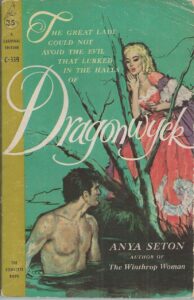
DRAGONWYCK
By Anya Seton
Anya Seton is a twentieth century writer who doesn’t get near the due she deserves. My favorite novel of hers, Green Darkness, is one of the absolute best reincarnation novels I’ve ever read; the book flips back and forth between the early 1970s and Tudor England, exploring a notion I’ve always found interesting—that souls can become trapped here on the earthly plane due to tragedy, and when reincarnated, they try to rectify the tragedy to free their soul for eternal peace—but all too often, without understanding, the tragedy replays itself over and over. Dragonwyck, originally published in 1944, is more of a Gothic in terms of style and story than Green Darkness—though Seton’s work always seemed to have a Gothic tone. The heroine of Dragonwyck, an innocent young woman named Miranda who comes to the big house on the Hudson as a companion to the owners’ daughter, but soon falls in love with the very much married master of the house, Nicholas. His invalid wife dies shortly thereafter, and Miranda married Nicholas…only to discover her wealthy husband has a very dark side she wasn’t aware of, including opium addiction, and their marriage begins to founder when their newborn baby takes ill and dies. Did Nicholas murder his first wife, and does he want to murder Miranda now that she’s become an inconvenience?
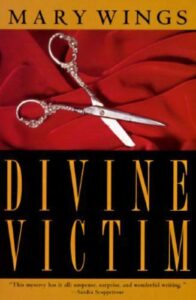
DIVINE VICTIM
By Mary Wings
Mary Wings is perhaps best known for her Emma Victor private eye series, beginning with 1986’s She Came Too Late, a pioneering series of lesbian detective fiction. She hasn’t published since 1999, which is criminal. Divine Victim was her only stand alone mystery work; it won the Lambda Literary Award for 1994. Divine Victim is an homage to, and riff on, the queer coding that was almost always present in Daphne du Maurier’s work. Like in Rebecca, Wings’ narrator has no name; her partner has inherited a ranch in Montana from her aunt, and the couple move to Montana. While Maryam, the partner, is away, Unnamed Heroine begins to suspect someone on the ranch is trying to kill her—and things there aren’t what they seem. Around almost every corner she encounters yet another secret, another mystery while “accidents” keep happening to her. The house itself, like du Maurier’s Manderley, is a brooding, spectral presence in the novel, and the suspense is so unbearable that you cannot stop turning the pages. Divine Victim has tragically been long out of print; I cherish the hardcover copy I acquired years ago.
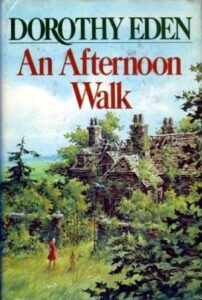
AN AFTERNOON WALK
By Dorothy Eden
Another enormously successful mid-20th century writer whose never completely gotten her due, Eden became best known for her romances involving nineteenth century heiresses and the impoverished nobles they married—but she was also a topnotch writer of what we now call “domestic suspense,” and she also wrote novels in the classic Gothic style. An Afternoon Walk is one of the best examples of how a suburban existence can also prove to have a Gothic sensibility. Ella, our heroine, has recently suffered a miscarriage and so is grieving. She takes her six-year-old daughter for a walk, and they came across a large, abandoned house. They hear a scream from inside and an owl flies out of a broken window. Then a woman disappears, Ella starts getting mysterious, threatening phone calls—and no one believes her story about the house, or the calls. She feels like she is being watched, and slowly begins to wonder if the miscarriage hasn’t triggered a mental breakdown of sorts. She isn’t having a breakdown, of course, but the gaslighting and fears of being locked away from her only child seem all too real as rendered by Eden, and it remains one of my favorites. I mean, this opening: Ella hadn’t meant to walk so far. But the afternoon was so beautiful, so hot and hazy and windless, with the fields full of tall waving grass, white daisies and red poppies, that she had not called to Kitty to stop.

THE GOLD DIGGERS
By Paul Monette
Paul Monette is best remembered for winning the National Book Award for his memoir Becoming a Man, part of his critically acclaimed trilogy of memoirs (the others being Borrowed Time and Last Watch of the Night). But Monette also wrote wonderful novels that I discovered when they were reprinted in the 1990’s by Alyson Classics, and The Gold Diggers remains a favorite. Gay couple Peter and Nick live in Crook House, a beautiful old mansion in the Hollywood Hills, and Peter’s old friend Rita from New York comes to live with them. Peter and Nick are happy together in their open relationship, and Rita is a welcome distraction for both of them…until she discovers a secret compartment in her closet and it turns out that Crook House has a lot more secrets than the ones the three friends are keeping from each other—including a long-buried treasure that someone is more than willing to kill them to get. As the three work their way through the mystery they also find themselves learning a lot about themselves and each other, all with Monette’s trademark wit and gift for language.

SEA JADE
By Phyllis A. Whitney
The American contemporary of Victoria Holt and Mary Stewart, Whitney had a remarkable career along with a string of New York Times bestsellers. She won two Edgars for Juvenile Fiction from Mystery Writers of America, published over seventy novels during her lifetime, and was eventually named an MWA Grand Master. No list of Gothic novels would be complete without one of Whitney’s novels, but choosing just one was the real problem. Personal favorites include Listen for the Whisperer, The Turquoise Mask, and Hunter’s Green, but for the purposes of this list I chose Sea Jade, as it is perhaps the most Gothic in style of Whitney’s deep canon. With this amazing opening sentence (she was a master of how to open a novel), It was fitting that I had my first glimpse of the house at Bascomb’s Point during the flash and fury of a violent thunderstorm, the Gothic sensibility of the book was firmly cemented into place. One of Whitney’s few historicals, orphaned Miranda Heath is coming to live with the family of her father’s old friend, Obadiah Bascomb—despite being warned against him and his family by her father on his deathbed. Miranda, broke and alone, has no choice but to accept the invitation—and finds herself in the center of a mystery deeply rooted in the past—one not made any easier for her by her impetuous marriage to a man who is practically a stranger. As she slowly begins uncovering the twisted secrets of the house at Bascomb’s Point and the family that live there , Miranda begins to fear for her own safety—and her own husband might be the one who wants her dead so the secrets remain buried.
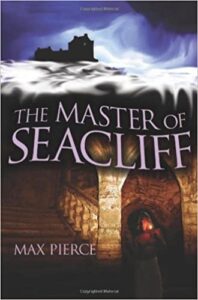
THE MASTER OF SEACLIFF
By Max Pierce
Okay, a caveat here: when I worked in publishing, I acquired, edited and published this gay take on a Gothic suspense novel. I loved the way Pierce took a traditional Gothic plot and made it unique and original by making the main characters gay men. Like most Gothic heroines, twenty year old Andrew Wyndham is orphaned and poor with no prospects. He dreams of being a painter in Paris but has no means to make that happen. A friend arranges a job for him at Seacliff, a brooding house on the Atlantic coast, where he will work as a tutor to the son of the house’s master, Duncan Stewart. (The tutor/governess trope is very popular in Gothics.) Soon Andrew is attracted to the handsome, masculine master of Seacliff, but the house has terrible secrets—secrets whose shadows threaten to poison the lives of the living. The voice, the tone, the mood of this book drips with Gothic suspense, and the romance between the innocent young hero and the secretive Duncan is handled both deftly and cleverly, all the while Andrew is unsure if he can trust the master of Seacliff with both his heart and life.
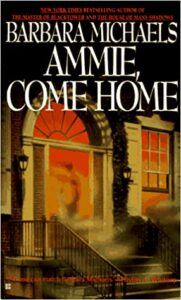
AMMIE COME HOME
By Barbara Michaels
Barbara Michaels was one of the pseudonyms of the magnificent Dr. Barbara Mertz, who was one of my favorite writers of the latter half of the twentieth century. As Elizabeth Peters, she wrote three terrific mystery series—the Amelia Peabody perhaps being the strongest of the three. She wrote Gothic suspense with a slight touch of the paranormal as Barbara Michaels; as Michaels, she wrote my all-time favorite ghost story, Ammie Come Home. Ammie Come Home is a master class in writing a Gothic ghost story; very interior—there are only four main characters, with a few more sprinkled in for a scene here or there—and set in a classic old Georgian brick townhouse in Georgetown. Ammie Come Home also differs from the other books here on the list because it’s not a first person narrative; while Ruth is our primary point-of-view character, the story is told in the third person, which was an inspired choice: that slight distance from the thoughts of the main character is very effective during the parts that are absolutely terrifying. Ruth’s niece, a college student, is living with her; she is dating a young man Ruth doesn’t quite approve of, and is taking a course from an anthropology professor whom young Sara thinks would be perfect for her widowed aunt. Unbeknownst to Ruth or Sara, their house is haunted—and the two women, with their romantic interests, set in motion a chain of events that awaken the ghosts and put their own lives in danger as they realize they must solve a mystery going back hundreds of years, not only to save themselves but put the ghosts to rest once and for all. This book is just as scary and terrifying as anything written by a master of horror; Michaels manages to even make curtains moving in a lighted window the stuff of nightmares.
***


